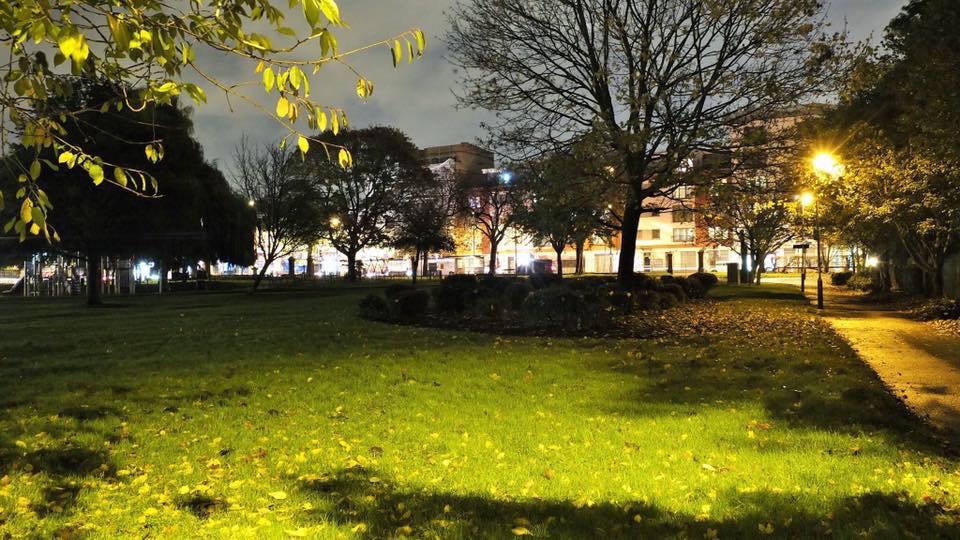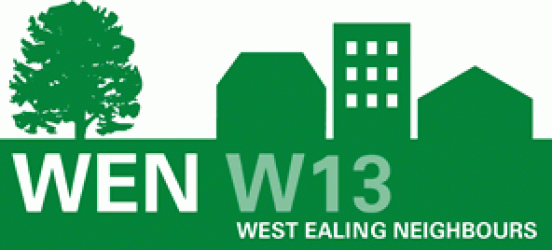DAY 6 – Tuesday 15 November 2011
As part of an ongoing series, Eric Leach reports from the Independent Examination of Ealing Council’s 2026 Local Development Framework Core Strategy (LDF CS).
Inspector Fieldhouse began today with examining Ealing’s Local Development Framework Core Strategy (LDF CS) with respect to protecting and enhancing Ealing’s green and open spaces over the next 15 years. The afternoon session would cover Climate Change and Sustainable Development (see below).
This was a better attended session with some 20 objectors and five Council Officers. We even had our first Ealing Councillor attend – Conservative Nigel Sumner from Hanger Hill Ward.
A representative from Twyford Abbey argued hard and long that the 5 hectares of Abbey land should become primarily a public park, with the Abbey converted to residential use and some other residential development on the site. Ealing Council was not convinced.
The Ealing Cricket Ground Area Panel (ECGAP) argued that a statement was needed to describe just what the old Barclays Bank Sports Ground on the North Circular could be used for and what it could not be used for.
Grove Estate Residents in Hanwell argued that some of their residents’ house backed onto Metropolitan Open Land (MOL). The LDF plans to remove this MOL status. Why? The Council said the ‘old’ MOL status was a mistake which was now about to be rectified.
Ealing Friends of the Earth (EFoE) was very concerned that Ealing’s MOL and open space generally was being ‘nibbled’ away. The Creffield Area Residents Association (CARA) concurred with EFoE but the Park Community Group disagreed and felt if we weren’t going to build huge tower blocks to cope with growth we’d have to do more nibbling not less. He also felt that there was too much provision for outdoor sport and some of it which was not being used could be used for some other purpose.
Save Trees in Gunnersbury made a long passionate plea for Ealing Council to publish its formal position on the possible protection and renovation of Gunnersbury Park. Ealing Council re-iterated its position that although it had joint ownership and management of the park it was the Borough of Hounslow which was the Local Planning Authority for the park.
Beryl Parkhurst complained that the Council did not take its responsibilities with regards to biodiversity seriously. She also felt that the Council was doing nothing to curtail back garden/yard ‘housing’ developments.
EFoE stated that as we have no formal policies in the LDF CS for a whole range of issues including noise pollution, light pollution, water quality, buffer zones, roadside land and access to footpaths to open land. As with many other parts of the whole examination the Council said that these issues would be dealt with in the LDF Development Management document to be published in 2012. Not for the first time also EFoE said that this was all well and good but it was necessary in the LDF CS to signpost this fact.
CARA pointed out that The London Plan (TLP) requires an expansion of open land but Ealing Council appears to predict that the will be less open land in future. He also wanted the nebulous ‘seek to protect’ open space phrase to be replace by ‘protect’ open space. Save Ealing Centre (SEC) made the point that with 40,000 new residents arriving over the next 15 years more open space would need to be ‘created’. The Council said that plans to create new open space were in place in Southall and Acton.
Ealing Civic Society (ECS) was concerned about plans to change the Green Belt status of some land in the extreme west of the borough to MOL status. No coherent reasons were presented by the Council in defence of this loss of Green Belt.
Green Corridors was discussed next with regards to the A40 and the North Circular. The Acton Alliance, ECGAP and ECS all made submissions here. What the residents want is a commitment to a 25 metre width of corridor which allows room for pedestrians, bikes and some landscaping. As with the Council’s Tall Buildings policy the Council won’t commit to any quantification of the dimension of a Green Corridor. The Council said that the ‘quality’ of the Green Corridor space is the critical factor and the width is irrelevant.
CARA then launched a broadside on Tywford Avenue Sports Ground. 4 acres of the site was owned by property developers who wanted to build homes on the site. Clearly to the surprise of Council Officers CARA declared the site to be an Area of Archaeological Importance (AAI) and protected by a 1979 Act of Parliament. Iron Age flint axe heads had been found on the site. Why is this AAI site not identified in the LDF CS? What is more, why is there no Archaeological section in the strategy? The Inspector chimed in at this point and suggested to the Council that not only should there be a section detailing and listing Archaeological sites there should be one describing and listing Heritage sites. She noticed that the Council weren’t keen to do this but she insisted they draft these sections anyway!
I argued that the Council’s policy for protecting outdoor sports grounds was inappropriate. The Council lists just 10 strategic sports site in the borough which it is going to give special protection to. None of them are single sport sites, so leading 100+ year old West London sports clubs like Ealing Cricket Club and Ealing Lawn Tennis Club are deemed not worthy of special protection. Sports sites offering multiple sports are deemed strategic but the sports site offering more sports than any other in Ealing (Old Actonians with 8 sports) does make it on to the magic list of 10. I also wanted a correction in the Council’s Evidence Base which managed to mangle the following TLP policy of:
‘The focus will principally be on small, community, park or estate-based projects’
to read:
‘The focus should be on small community estates and park based projects’
Finally I stressed that those sports site which were designated by Government as Community Amateur Sports Clubs are apparently to receive no particular local protection or support to aid their continued survival.
CLIMATE CHANGE AND SUSTAINABLE DEVELOPMENT
Beryl Pankhurst pointed out that pollution levels in Ealing breached European standards and the Council seems unable or unwilling to rectify this. She found the Council’s commitment to sustainable buildings very poor and the Council offered no encouragement or advice on green building approaches. The protection of cycle tracks she said was inadequate. The Council launched a fact packed rebuttal on the cycling front. Ealing, he said, was the first London borough to publish a cycling policy. It had cycle trained over 800 children. Six Bicycle Hubs were planned. On the subject of sustainable buildings a section of information (yet again) would be published in the 2012 LDF Development Management document.
The LibDem representative and EFoE wanted the Council to publish a policy on the trying to reduce noise pollution caused by Heathrow and Northolt Airports and by helicopters. The Council stated that it had no control over behaviour which emanated from outside the borough.
EFoE stated that the LDF CS didn’t seem strategic enough. There was no big picture. There is no Ealing Council definition of Sustainable Development. With the Inspector’s intervention at this point the Council agreed to supply a definition and insert it into the LDF CS Glossary. He went on to outline that National Government formally publishes Climate Change targets; Regional Government formally publishes Climate Change targets; so why can’t Ealing publish its own Local Government Climate Change targets? A response was a long time coming from the Council. It then said that it had targets but they were not published in the LDF CS. The Inspector stated that it was important that these targets were in the LDF CS (a Development Plan Document – DPD) as only in here would the targets has any real statutory significance.
EFoE renewed his objections by demanding that the LDF CS should also contain the Council’s strategy for reducing traffic levels and reducing the pollution levels directly attributable to traffic.
ECS raised the issue of the long running and useful Ealing Council Sustainability Checklist being deleted and its concerns that replacement guidelines might not include all the valuable content. Ealing Council agreed to meet up with ECS separately to review this matter.
EFoE reminded us all that sustainability of development was but a very small part of the sustainability challenge for the whole of the built environment. The Inspector asked the Council to review and report on how they were planning to retrofit sustainability.
ECS challenged the Council on the necessity of carrying out flood risk assessments on every development large or small. Surely with small developments this was unnecessary.
The Council repeatedly dismissed objections by stating that TLP covered that particular issue and that the Council did not want to repeat TLP guidelines in the LDF CS. EFoE pointed out that in order for parts of the LDF CS to be understood by non planners (eg residents) TLP references need to be added in many places.
During a final session on resolving outstanding Examination issues the Inspector raised the spatial issue of just where the Council planned to provide or allocate space for new or expanded social infrastructure facilities in the small built up Ealing town centre. This brought a stunned silence from everyone. The Council mumbled that they would look into this. The central Ealing residents in the room smiled at each other as the Inspector’s comment revealed that she was now getting to grips with the geography of central Ealing. For me, who had written and presented the Social Infrastructure objection at the Arcadia Public Inquiry in 2009, the comment was especially significant.
Eric Leach
16 November 2011


Thank you thankyou Eric. I was becoming depressed after attending previous hearings and watching the self appointed “queen” of the Planning Policy team eating an apple. We were doomed doomed or so I thought. Now I am eagerly searching for Neolithic hand axes wherever I see bare soil in Ealing. Just imagine one neolithic hand axe crafted 1000s of years ago could fell the unstoppable Planning Policy team with their arrogance, jargon and obscure references. Who said the pen was mightier than the hand axe?